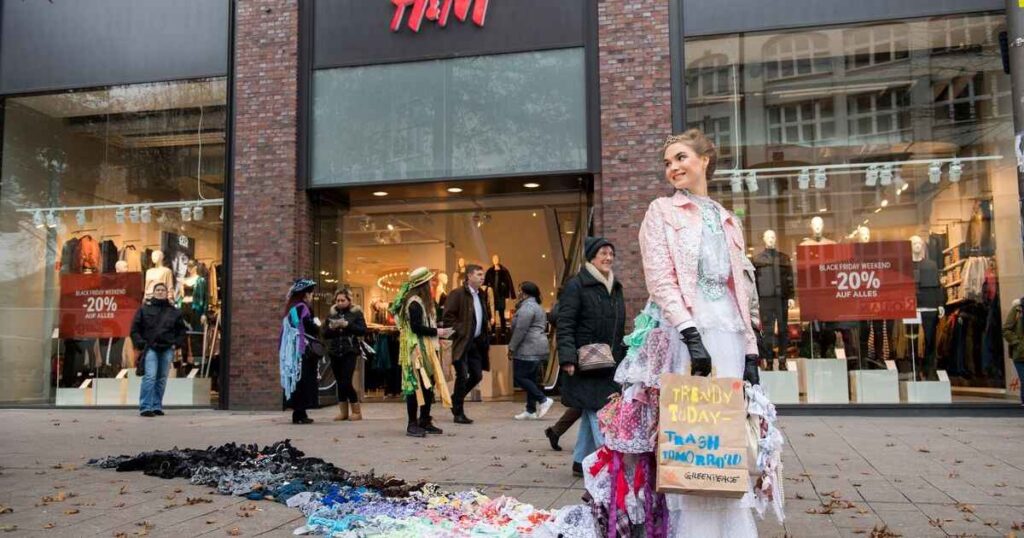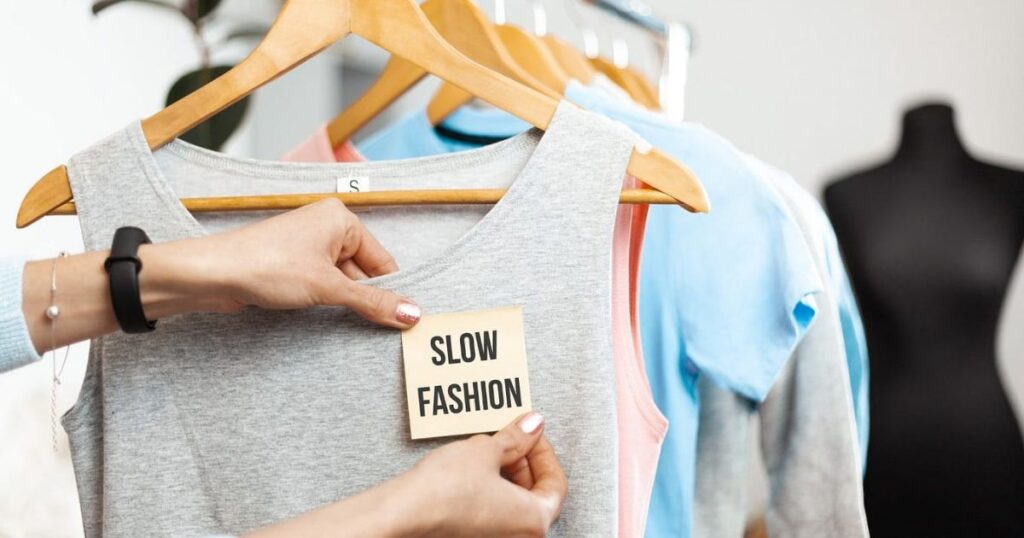In recent years, the fashion industry has been swept up in a whirlwind of eco-friendly buzzwords and green initiatives. But is that trendy “sustainable” shirt really saving the planet, or just easing your conscience? Let’s dive into the complex world of sustainable fashion and unravel the truth behind the green façade.
The Rise of Sustainable Fashion
The fashion industry’s pivot towards sustainability didn’t happen overnight. It’s been brewing for years, fueled by growing environmental awareness and consumer demand for ethical products. As images of polluted rivers and landfills overflowing with discarded clothes circulated, people started asking tough questions about their shopping habits.
Fashion brands, ever keen to capitalize on trends, jumped on the green bandwagon faster than you can say “organic cotton.” Suddenly, every label from high-street to high-end was touting its eco-credentials. But in this rush to go green, has the industry created real change, or just a new marketing strategy?
What is Sustainable Fashion?
Before we debunk the myth of sustainable fashion, let’s nail down what it’s supposed to be. In theory, sustainable fashion is about producing clothes in a way that’s environmentally and socially responsible. This covers everything from the materials used to the working conditions of the people who make the clothes.
Common claims you’ll see include:
- Use of organic or recycled materials
- Fair wages and safe working conditions
- Reduced water usage and chemical pollution
- Circular design principles (clothes that can be easily recycled)
Sounds great, right? But here’s where things get tricky.
The Reality Behind the Green Curtain

The fashion industry is notoriously complex, with sprawling global supply chains that are about as transparent as a pair of skinny jeans. This complexity makes it incredibly difficult to verify sustainability claims.
Take, for example, a simple cotton t-shirt. Its journey might look something like this:
- Cotton grown in India
- Fabric woven in China
- Dyed and printed in Bangladesh
- Sewn together in Vietnam
- Shipped to warehouses around the world
At each stage, there are potential environmental and social pitfalls. And that’s just for a basic tee – imagine the web of suppliers involved in more complex garments.
This complexity opens the door for greenwashing, where brands make vague or misleading claims about their eco-friendliness. They might trumpet their use of organic cotton while staying suspiciously quiet about the toxic dyes they use, or the working conditions in their factories.
The Cotton Conundrum
Speaking of organic cotton, let’s unpack that particular sustainability claim. Organic cotton is often held up as a poster child for sustainable fashion, but the reality is more nuanced.
| Aspect | Conventional Cotton | Organic Cotton |
| Pesticide Use | High | Low/None |
| Water Usage | High | Very High |
| Yield | Higher | Lower |
| Price | Lower | Higher |
While organic cotton does away with harmful pesticides, it actually requires more water to grow than conventional cotton. It also produces lower yields, meaning more land is needed to grow the same amount of cotton. This isn’t to say organic cotton is bad – it’s just not the simple solution it’s often portrayed as.
Synthetic Materials: A Double-Edged Sword
Another popular “sustainable” option is clothing made from recycled plastics. On the surface, it seems like a win-win: we’re cleaning up plastic waste and turning it into something useful. But there’s a catch.
Every time these clothes are washed, they release tiny plastic particles called microfibers into the water system. These microfibers are too small to be filtered out by most water treatment plants and end up polluting our oceans and entering the food chain.
Moreover, while these garments might be keeping plastic bottles out of landfills, they’re not biodegradable. So when they eventually wear out, they’ll still end up as waste – just in a different form.
Fast Fashion’s Slow Death?

One of the biggest elephants in the sustainable fashion room is the persistence of the fast fashion model. Even as brands launch “conscious” collections, they’re still churning out new styles at a breakneck pace, encouraging overconsumption.
“The most sustainable garment is the one you already own.” – Orsola de Castro, Fashion Revolution co-founder
This quote hits the nail on the head. No matter how “eco-friendly” a new piece of clothing claims to be, it can’t compete with the sustainability of simply wearing what you already have.
Read This Post: Garnethillskids.com | Where Style Meets Comfort for Kids
The True Cost of Ethical Production
When we talk about truly sustainable fashion, we’re not just talking about the environment – we’re also talking about the people who make our clothes. Ensuring fair wages and safe working conditions is a crucial part of sustainability, but it comes at a cost.
Consider this case study:
A small, ethically-run clothing brand in the US wanted to produce a line of t-shirts. They sourced organic cotton, used low-impact dyes, and ensured their workers were paid a living wage. The result? A basic tee that retailed for $50. Meanwhile, a similar (but not eco-friendly) shirt from a fast fashion brand might cost $5.
This price disparity highlights one of the biggest challenges in sustainable fashion: making it accessible to the average consumer.
Innovation or Illusion?
The fashion industry is abuzz with new “eco-friendly” materials and technologies. From fabrics made from orange peels to blockchain-enabled supply chain tracking, there’s no shortage of innovation. But are these solutions scalable, or just eco-theater?
Take the much-hyped mushroom leather, for instance. While it’s an exciting development, current production methods are energy-intensive and expensive. It’s a far cry from being able to replace conventional leather on a large scale.
The Consumer’s Dilemma
So where does this leave us, the consumers? Navigating the world of sustainable fashion can feel like trying to solve a Rubik’s cube blindfolded. Every choice seems to come with its own set of pros and cons.
Here are some tips for making more sustainable fashion choices:
- Buy less, choose well: Invest in quality pieces that will last
- Look for transparency: Support brands that are open about their supply chains
- Consider secondhand: Buying pre-loved clothes extends their lifecycle
- Care for your clothes: Proper care can significantly extend a garment’s life
- Be skeptical: Don’t take sustainability claims at face value
Beyond the Hype: Real Solutions

While the myth of sustainable fashion might be pervasive, that doesn’t mean all hope is lost. Real solutions do exist, but they require a fundamental rethinking of our relationship with clothing.
The circular fashion economy, where clothes are designed to be reused, recycled, or biodegraded, offers one potential path forward. The slow fashion movement, which emphasizes quality over quantity, is another.
But perhaps the most important change needs to happen in our own mindsets. We need to move away from viewing clothes as disposable items and start seeing them as valuable resources.
Conclusion
The journey towards truly sustainable fashion is long and complex. While the current state of the industry often falls short of its lofty claims, that doesn’t mean we should give up. By staying informed, making thoughtful choices, and demanding real change from brands and policymakers, we can help steer the fashion industry towards a genuinely sustainable future.
Remember, the most sustainable wardrobe is the one you already own. So the next time you’re tempted by a “sustainable” new outfit, ask yourself: do I really need this, or am I just falling for the myth of sustainable fashion?

Maxwell Brooks, a prolific wordsmith on BlogsProto.com, navigates literary realms with grace. His prose dances through genres, captivating readers with tales that resonate, leaving an indelible mark on the digital literary landscape.











